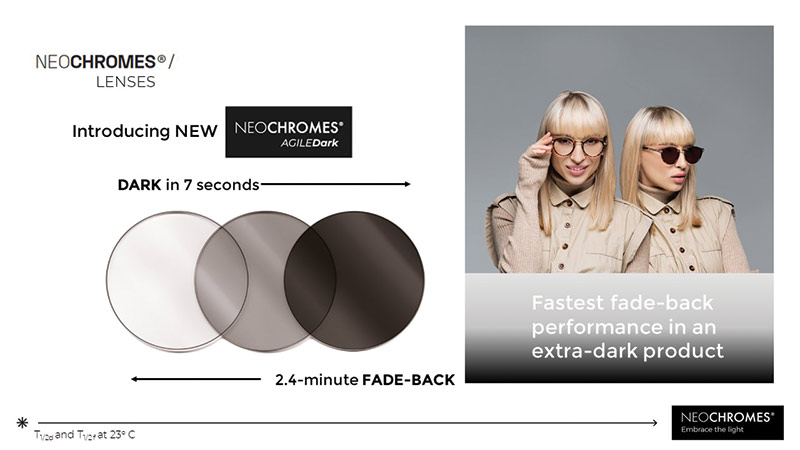Sponsored by IOT

By Deborah Kotob, ABOM
We have much to offer patients to help them see, feel and look better in their glasses. But we often overlook how eyewear can help patients care for their eyes. Are your patients aware that excess exposure to UVR and HEV blue light can affect their eyes negatively and lead to irreversible damage over time? Are they aware that the damage is cumulative and that protecting the eye from this harmful light should start young? The answer is no; few are aware, but you can change this with a simple statement. It starts with you explaining that we all need to care for our eyes to lower our risk of developing sight-robbing conditions later in life. Then, tell them you recommend photochromic lenses to all your patients, starting with kids, because of the high-level protection they provide for our eyes from harmful sunlight. Patients easily understand when you draw a parallel between the skin and sun damage, and the eyes and sun damage. Just as the sun damages the skin so it can damage the eyes, you are recommending glasses that will help them care for their eyes by protecting them from the sun. And a bonus is that the lenses reportedly provide some comfort when indoors, exposing the eyes to bright and blue-rich screens for hours.
Fortunately, primary doctors and dermatologists have done an excellent job informing patients of the risk posed to the skin by sun exposure. In addition, major brands of sunscreen and the Skin Cancer Foundation have national campaigns to increase consumer awareness of the risk posed to the skin from sun exposure. ECPs can take advantage of this consumer awareness campaign and relate sun damage to the eyes.
Patients understand they can reduce sun damage that results in premature aging and skin cancer. Now, you can make them aware that reducing sun exposure over time can reduce their risk of cataracts and retinal damage linked to age-related macular degeneration (AMD) and eyelid cancer. I assure you that the patient does not know that 10 percent of all skin cancers occur in the delicate tissue of their eyelids and the skin surrounding the eye. The eyelid region is one of the most common sites for non-melanoma skin cancers—basal cell carcinoma (BCC) and squamous cell carcinoma (SCC).
Now that I’ve given you my answer to why photochromic and how to explain your reason for recommending them, let’s talk about the MAGIC. Photochromic lenses sell themselves when you demonstrate the magic and let the patients see the lens quickly darken to a sunglass level tint and rapidly fade back to an indoor lens. Perhaps you’ve seen the demonstration so often that you are numb to the magic, but your patients may be seeing this for the first time, and it is guaranteed to have the WOW effect! I have said it before, but I will reiterate the easiest lens to sell is photochromic. We are visual creatures, and nothing is more convincing than seeing something with our own eyes.
Fortunately for the ECP and the patient, photochromic lens technology continues to set new benchmarks for performance, from quicker activation and fade back speeds, to improved responsiveness to temperature, extra-dark activated states and even behind the windshield of a car. (Old photochromic technology depended entirely on UV exposure to activate the photochromic dyes; but visible light transmits through glass and helps activate NEOCHROMES® Agile Dark lenses).
IOT encourages us to embrace the light with their new best-in-class NEOCHROMES Agile Dark Lenses. The photochromic performance of NEOCHROMES Agile Dark Lenses is made possible with unique dyes, developed by IOT. These lenses block 100 percent of UVA and UVB up to 400 nm. Additionally, they filter the high energy visible (HEV) blue light from the sun, blocking upwards of 92 percent of outdoors. The same lenses reduce indoor HEV blue wavelengths from digital screens and LED lighting by 60 percent. Not only are they extra dark, but they darken well in high temperatures and behind the windshield, thanks to new extra reactive photochromic dyes.
New technological advances have vastly improved photochromic performance so that the ECP can confidently recommend this lens to help their patient care for their eyes. I firmly believe that every patient, from kids to seniors, deserves the benefits of photochromic lenses.













